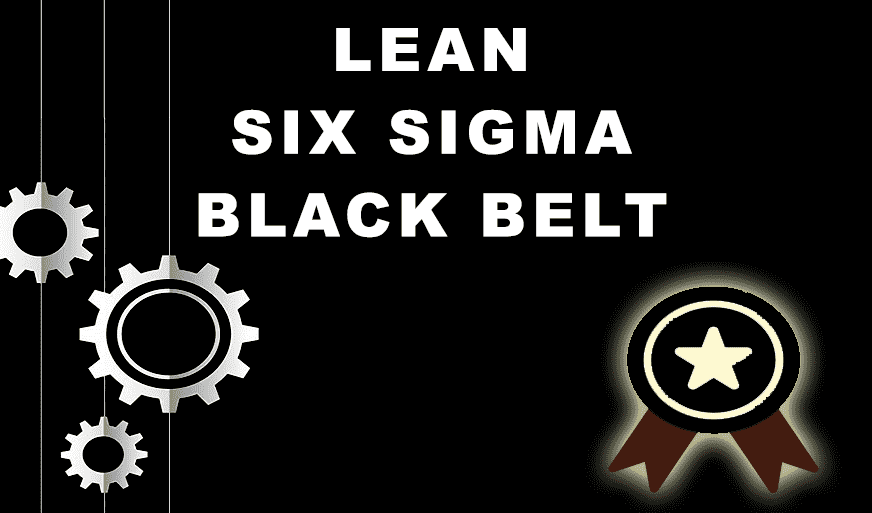Learn about Statistical Process Control (SPC) and its top applications
-
 By Syed Irfan
By Syed Irfan - Published on Mar 21 2023

Table of Contents
- Introduction
- What is Statistical Process Control, and how does it work?
- Background of Statistical Process Control
- Why Take the Benefit of Statistical Process Control?
- Why Use Statistical Process Control?
- How to Use Statistical Process Control?
- How to Improve Your Organization and Your Career by Using Statistical Process Control?
Introduction
Statistical Process Control (SPC) and Its Applications
With rising demand and dwindling natural resources, today's manufacturers confront more hurdles than ever before. This is where SPC comes into play. SPC charts are now used by businesses worldwide as critical tools for monitoring, improving process control, and even with project quality management guide.
Its primary advantage is that it sets the operator firmly in charge of quality. Another significant benefit is that it allows operators to discern if a process is slipping out of bounds before faulty hardware is produced, allowing defect avoidance rather than discovery.
SPC lets the individuals know if they're creating conforming goods and intervenes if processes start to stray out of control.
There is no end in sight to the plight of political uncertainties, raging emergencies, and growing expenses. That is why manufacturing firms that want to survive must embrace resources that allow them to exert control over any aspect of the production process. This article explains SPC, including what it is, where it came from, why it's needed, and what solutions are available to help you install and operate the process.
What is Statistical Process Control, and how does it work?
SPC is often characterized as controlling and measuring quality via statistical analysis, ultimately improving the production process.
Manufacturers gather high-quality real-time data in process or product measurements collected from various instruments and devices. The information gathered is subsequently utilized to assess, monitor, and regulate the production process. The role of SPC in quality control cannot be denied.

They can assess if their processes are performing to their total capacity by gathering this data and showing it on graphs and charts. SPC identifies opportunities for improvement, allowing businesses to reduce waste, delays, and the probability of creating faulty goods.
Background of Statistical Process Control
SPC has been around for over a century, which might be surprising. Doctor William Stewart of Bell Laboratories researched in 1924 to find ways to improve product quality while cutting prices, laying the cornerstone for Statistical Process Control.
He designed the control chart to see if a process was under control or out of control. In 1939, he wrote, "Statistical Method from the Perspective of Quality Control." During WWII, the US military depended significantly on SPC to monitor product quality in weapons and explosives without jeopardizing safety.
Unfortunately, when the war ended, SPC was no longer used.
Dr. W. Edwards Deming improved and updated Stewart's work after the war and carried it to Japan, where Japanese corporations warmly accepted the principles.
It assisted Japan in regaining and even exceeding its manufacturing capabilities, earning the country a global reputation for industrial excellence.
Finally, in the 70s, under the strain of competition from Japan's high-quality produced goods, the United States began to implement SPC. As a result, it is used all over the world nowadays.
Why Take the Benefit of Statistical Process Control?
As previously said, today's industries face a slew of challenges over which they have little influence. To make matters worse, they operate in a very competitive market.
Companies may use SPC to control at least one part of manufacturing: the processes. As a result, businesses may enhance quality and efficiency while controlling costs by taking control of the production process.

SPC places a greater emphasis on prevention than detection. It allows operators to track process performance in real time, allowing them to notice patterns or unfavorable process modifications before the firm produces inferior items.
Objectives of Statistical Process Control
The main goal of control is to improve processes by removing undesired and unexpected factors. When a firm employs SPC to achieve that aim, it also helps them reach other relevant business objectives, such as:
- Increasing customer happiness while lowering customer complaints is a win-win
- Supply chain checks are being reduced or eliminated.
- Creating a quality standard that is constant and predictable
- lowering the expenses of discarded materials, rework, and inspections
- Enhancing the motivation and confidence of machine operators
- Improving data input, analysis, and reporting efficiency
- Increasing collaboration at all levels of the company
- Boosting total efficiency
- Process improvements make facilities more efficient. Thus capital investments can be reduced.
Why Use Statistical Process Control?
Today's manufacturing firms are up against ever-increasing competition. At the same time, the cost of raw materials continues to rise. These are elements that, for the most part, businesses have no control over.
As a result, companies must focus on what they can control: their processes. They must aim for lasting quality, efficiency, and cost-cutting improvements. Unfortunately, many businesses still rely on post-production inspection to uncover quality flaws.
The SPC method is used to transition a company's quality controls from detection to prevention. The operator can notice trends or changes in the process before they result in non-conforming products by monitoring the performance of the process in real time.
How to Use Statistical Process Control?
The production process should be examined to find the significant areas of waste before introducing SPC, or any other new quality system. Rework, scrap, and extra inspection time are examples of manufacturing process waste.
Applying SPC tools to these areas initially would be the most useful. Because of the cost, effort, and production delays, not all dimensions are evaluated during SPC. During a print review or Design Failure Mode and Effects Analysis exercise,
The cross-Functional Team should identify the significant elements of the design or process before SPC implementation. Then, data would be gathered and monitored on these crucial or critical features. SPC control chart can be utilized to study this data.
Analyzing the Data
The available data on a control chart must lie between the control boundaries if only conventional factors and no unique causes have been found. Exceptional cases are usually, outliers that fall outside of the control limits, whereas common causes will fall inside the control limits.
There should be no unusual reasons in any charts for a process to be termed statistically controlled. No particular reasons will be discovered in a controlled process, and the data will fall within the control boundaries. The following are a few examples of variance due to a similar cause:
• Within-specification variations in material qualities
• Variations in ambient temperature or humidity that occur throughout the year
• Wear and tear on machines and tools is to be expected
• Manufacturer parameters have a lot of variables
• A reasonable variation in measuring
Special causes, on the other hand, usually occur outside of the control boundaries or signify a significant change in the process. Here are a few examples of variance due to specific causes:
• Controllers that have blown up
• Misalignments of the equipment
• The measuring system has been changed.
• Changes in the process
• A problem with the
• Design criteria for raw materials are not met.
• For example, a tool, punch, or a bit that has been broken.
• Unfamiliar with the technique, inexperienced operator
When using Statistical Process Control charts to monitor a process, the inspector will ensure that all data points are within control limits and keep an eye out for any trends or unexpected changes. Suppose any unusual causes of variation are discovered.
In that case, steps should be made to understand the source of the variation and undertake remedial actions to bring the process back into statistical control. Other data points’ changes or patterns should be recorded and studied within the control limitations. Among them are, but are not limited to:
• There are runs in which seven or more data points in a row are on one side of the process centerline.
• Changes in the typical spread of data, when several data points become closer or further apart.
• 7 or more data points rising or falling in a continuous pattern
• Data shifts that are higher or lower than the typical mean
We can ensure we're creating components that fulfill the customer's needs by addressing any unusual causes, trends, or adjustments in the process. Remember that the control limits must lie between the engineer's and the customer's spec limitations.
Contact one of Quality-Subject One's Matter Experts for additional information on the Statistical Process Control, methodology, and tools available, as well as mentorship, training, and support with SPC implementation.
Data Collection and Documenting
SPC data is gathered in the form of product measurements or process monitoring. Depending on the information-gathering requirements, the data is subsequently logged and tracked on various sorts of control charts. It is critical to utilize a suitable chart type to acquire value and receive meaningful data.
The information might be in the form of a circular variable or a characteristic. Individual values or an average collection of observations can also be gathered and recorded.
The following are some broad principles and examples. This list is not exhaustive and is provided just as a guide. In addition, recent innovations have borne out certain SPC software which can aid us in this respect.
Outline of Statistical Process Control Tools
There are seven quality control tools and seven supplemental tools that are currently being utilized in SPC which are as follows:
Quality Assurance Instruments
1) Cause and effect diagrams. These diagrams, also known as fishbone diagrams, are used to identify various sources of an issue. Fishbone architecture is used in the diagrams, with each branch representing a problem
2) Check sheets. They are primary, pre-made forms used to visualize and evaluate data. These sheets operate best with data that can be witnessed and gathered by the same person or in the same area repeatedly.
3) Control charts. They are diagrams that show how something is controlled. Control charts are the most used and oldest SPC They help with data collection and recognizing odd events, especially when contrasted to conventional process results. The graphs differentiate between familiar and unusual causes of process variation.
4) Histograms. Histograms are graphs that depict frequency distributions and look like bar charts. They perform well when the majority of the data is
5) Pareto Diagrams. Pareto charts are bar graphs that indicate time, money, frequency, or cost. They're particularly beneficial for determining the frequency of problems.
6) Scatter Diagrams. These are diagrams that show how things are connected. Scatter diagrams, commonly known as X-Y graphs, depict pairs of numerical data with one variable allocated to each axis. Scatter diagrams operate best when numerical data is coupled.
7) Stratification. This tool isolates data to make it simpler to see patterns. Stratifying items, people, and data into layers or discreet categories are known as stratification. It's perfect for combining data from many sources.
Additional Resources
1) Stratification of data. A version of the stratification mentioned above.
2) Defect Maps. These maps aid in the visualization and tracking of a product's problems, distinguishing their physical locations and categories. Each discovered flaw is marked on a map.
3) Events Log. Essential software and hardware events are recorded in circumstances logs, a centralized, standardized method.
4) Process Flowcharts. These flowcharts are diagrams that show the phases of a process in a logical
5) Progress Centers. They are a type of facility that helps people make progress. Progress centers are centralized sites that track progress and make choices based on the information gathered.
6) Randomization. Randomization assigns the units in question to one of many treatment groups by random.
7) Sample Size Determination. Determining the Sample Size This tool is used to figure out how many people or events should be included in a statistical
Some of the applications of Statistical Process Control
SPC procedures are simple to apply with the correct tools. There are a variety of goods available, all of which are custom-made to meet the needs of any organization, regardless of size, industry, or kind.
The following are some of the instances.
• aACE: Small and medium enterprises might benefit from aACE's business management software. Accounting, customer relationship management, corporate resource planning, inventory management, order management, and production management are among the modules available.
• Katana: Katana is a popular manufacturing and inventory management software that's great for growing companies. It's compatible with QuickBooks, Shopify, and WooCommerce, to mention a
• GeniusERP: Genius ERP gives bespoke manufacturers the tools they need to boost productivity, save costs, and enhance the efficiency of their manufacturing In the United States and Canada, it works best with small to mid-sized bespoke producers. Account administration, CRM, inventory management, product engineering, job pricing, scheduling, and production planning are all included in GeniusERP's integrated system.
• Infor VISUAL: MRP, MES, supply chains, reporting, and customer management are all covered by Infor VISUAL. Manufacturers in the automobile, aircraft, electronics, industrial equipment, and medical device sectors benefit the most from
Additional Control Resources
There are a plethora of process control materials. The ones after that are an excellent opportunity to learn more about processes at your speed and at your leisure.
Check out the Six Sigma Green Belt Course, which covers the Control Phase of Six Sigma and applies to everything you've studied thus far. Here you may discover everything there is to know about Six Sigma's history and progress.
You may brush up on utilizing control chart constants here, which is slightly different from Six Sigma but still connected. Finally, what comes first: Stability, Capability, or Normality when it comes to process and data distribution variables?
How to Improve Your Organization and Your Career by Using Statistical Process Control?
Lean Six Sigma specialists are needed in today's business environment to assist in negotiating the myriad variables and challenges they cause. It's a cutthroat world out there, and having the proper professional on your side may make all the difference.
The Lean Six Sigma Green Belt certification training course will assist your firm while also sharpening your quality control and business solutions abilities. The system provides an understanding of Six Sigma and the DMAIC methodology, and it is connected with top Green Belt certifications. In addition, you'll learn how to assess existing performance to identify process problems better and develop solutions.
To help you apply your newfound knowledge in a training set, the course will give you four simulation exam papers and four real-life projects. Finally, you'll get a voucher to take the IASSC exam and get your certification.
The training is ideal for quality system managers or engineers, quality supervisors, quality analysts and managers, quality auditors, and anybody else who wants to enhance the quality and procedures of their firm.
For more details about lean six sigma courses, chat with our course experts and get instant advice.
Suggested Read - Reasons Why Should Get Six Sigma Certifications
Subscribe to our Newsletters
Popular Programs
Trending Posts
Understanding the Key Principles of Lean Manufacturing
Last updated on Nov 22 2023
The Lean Continuous Improvement Model: A Comprehensive Guide
Last updated on Nov 7 2023
Quality Management System – QSM Approaches and Methodologies
Last updated on Aug 22 2024
Lean Waste Management: The Ultimate Guide 2023
Last updated on Dec 13 2023
Quality Manager Salary: What Freshers & Experts Earn in 2025
Last updated on Feb 3 2025
5 Lean Continuous Improvement Principles to Supercharge Your Operations
Last updated on Jan 2 2024
Categories
- Agile Management 54
- AI and Machine Learning 42
- Big Data 53
- Business Management 51
- Cloud Computing 44
- Digital Marketing 56
- Information Security 8
- IT Hardware and Networking 17
- IT Security 103
- IT Service Management 29
- Leadership and Management 1
- Microsoft Program 2
- Other 45
- Programming Language 31
- Project Management 162
- Quality Management 75
- Risk Management 8
- Workplace Skill Building 2
Trending Now
Top Career benefits of Lean Six Sigma Green Belt
ArticleLean methodology, Six Sigma methodology and Lean Six Sigma Explained
ArticleSix Sigma Black Belt Certification – Value and Career Benefits in 2024
ArticlePareto Chart in Six Sigma - Explained
ArticleQuality Management Interview Questions 2024
ArticleSix Sigma Certification Guide - A Professional's Guide
ArticleSix Sigma Yellow Belt Certification - Six Sigma for Beginners
ArticleQuality Control Explained – Six Sigma
ArticleTotal Quality Management - A Complete Guide for Beginners
ArticleQuality Assurance in Six Sigma Explained
ArticleQuality Assurance vs Quality Control
ArticleSix Sigma Certification – Everything you Need to Know About Getting Certified
ArticleLean Six Sigma on Resume for Rewarding Career Benefits
ArticleQuality Manager Interview Questions and Answers for 2025
ebookService Delivery Manager Interview Questions and Answers (With Examples)
ArticleSix Sigma Interview Questions and Answers 2024
ArticleHow to become a Quality Analyst
ArticleA Supply Chain Management Guide to Mastering Logistics End to End
ArticleSenior Quality Manager Interview Questions and Answers 2024
ArticleTop 30 Quality Analyst Interview Questions and Answers 2025
ArticleFinancial Analyst Interview Questions and Answers 2024
ArticleRisk Manager Interview Questions and Answers 2024
ArticleCompliance Manager Interview Questions and Answers 2024
ArticleOperation Manager Interview Questions and Answers
Article5 Lean Continuous Improvement Principles to Supercharge Your Operations
ArticleHow to Become a Quality Manager - Career, Job Scope and Certifications
ArticleEssential Components of a Quality Management System
ArticleSix Sigma Certifications - Reasons Why you Should Get Them
ArticleTop Qualities of a Good Manager and a Leader
ArticleCost of Poor Quality - A Detailed Guide
ArticleImplementing 5S Methodology for Better Work Efficiency
ArticleWhat Is Lean Management?
ArticleBest Six Sigma Books in 2024
ArticleLeadership vs Management - The Ultimate Guide
ArticleQuality Assurance Plan - Six Steps To Quality Assurance Plan
ArticleOperational Planning Creation, Key Elements and its Benefits
ArticleA Complete Guide to Product Life Cycle Stages 2025
ArticleSix Sigma tools for DMAIC Phases
ArticleWhat Is Lean Manufacturing?- An Overview
ArticleThe Lean Continuous Improvement Model: A Comprehensive Guide
ArticleDMAIC vs. DMADV: Key Differences and Choosing the Right Six Sigma Methodology
ArticleA Deep Dive into the Power of Lean Continuous Improvement Process
ArticleLean Continuous Improvement Methods for Business Excellence
ArticleIntroduction to Lean Manufacturing- Definitions, Framework, and More
ArticleUnderstanding the Key Principles of Lean Manufacturing
ArticleSecret to Unlock Organizational Excellence: Stages of Continuous Improvement
ArticleLean Continuous Improvement: A Detailed Guide to Mastering Organizational Quality
ArticleLean Waste Management: The Ultimate Guide 2023
ArticleA Deep Dive into Lean Continuous Improvement Tools
Article8 Wastes of Lean - Strategies for Identification and Elimination
ArticleThe Ultimate Guide to Lean Manufacturing
ArticleUnderstanding Lean Manufacturing's Pros and Cons
ArticleLean Waste Reduction Strategies: Boost Efficiency and Cut Costs
ArticleTop 10 Lean Manufacturing Tools for Optimal Productivity
ArticleBeyond the Basics: Benefits of Lean Continuous Improvement
ArticleWhat are Quality Standards? | A Guide to ISO Standards
Article7 Important Types of Quality Management System
ArticleA Comprehensive Guide to Quality Management Systems
ArticleISO 9001 Standard: Benefits and Certification
ArticleBenefits of QMS Certification for Your Business
ArticleStep-by-Step Implementation Guide to ISO 9001
ArticleThe Ultimate Guide to ISO 9001: Boosting Quality and Certification Success
ArticleQuality Management System – QSM Approaches and Methodologies
ArticleHow to Effectively Implement a Robust Quality Management System?
ArticleExplaining QMS Documentation Structure: Benefits and Best Practices
ArticleWho Needs ISO 9001 Certification and Why?
ArticleKey Elements of ISO 9001:2015 Quality Management System
ArticleOvercoming Common Challenges in ISO 9001 Certification: Tips and Best Practices
ArticleBest Quality Management Tools
ArticleTotal Quality Management (TQM) vs. Six Sigma
ArticleQuality Manager Salary: What Freshers & Experts Earn in 2025
ArticleCertified Scrum Product Owner: Job Roles And Responsibilities
ArticleTips for Continuous Integration Testing: Streamlining QA
Article10 Quality Management Strategies Adopted by Top Managers
Article
















